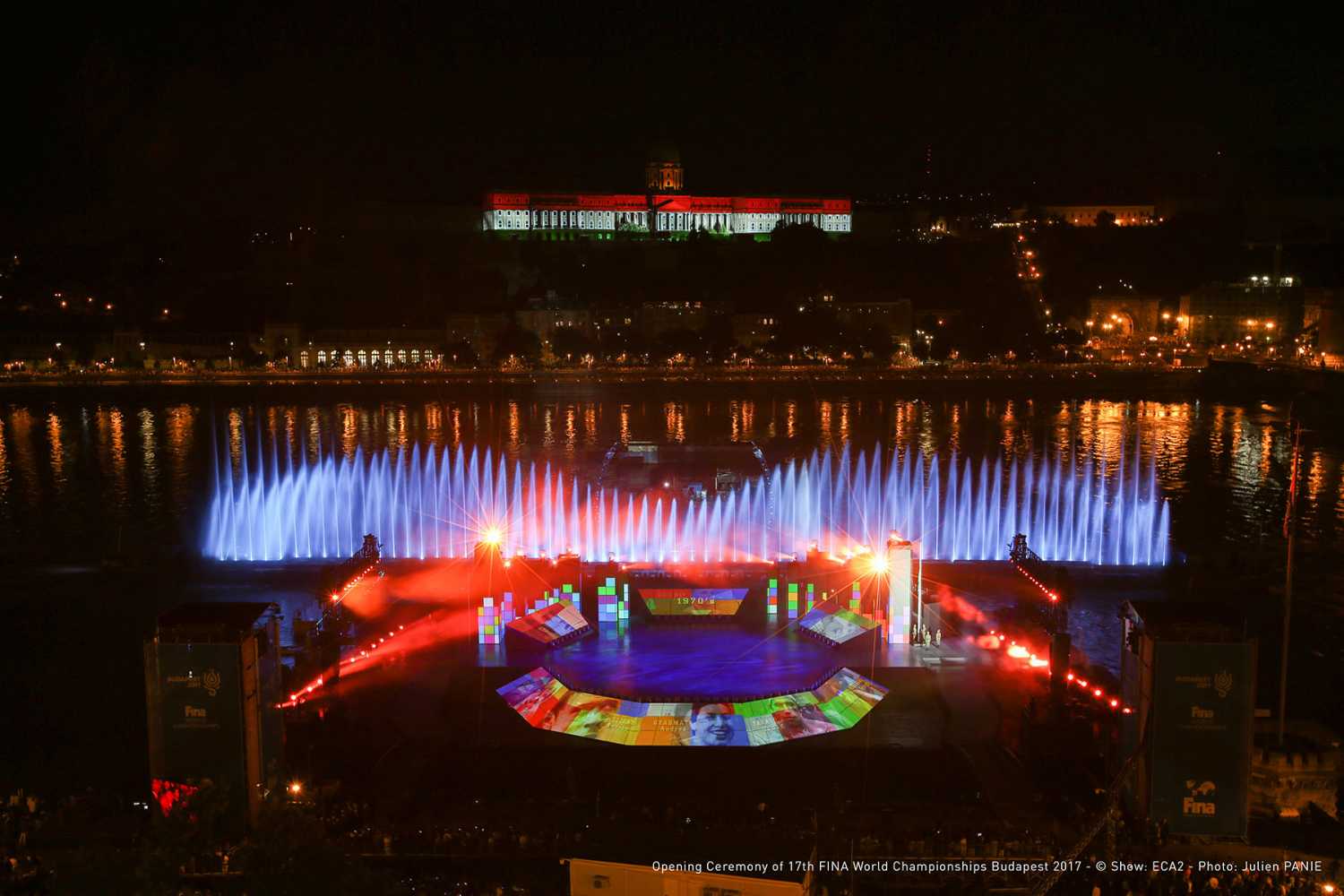Robe goes with the Flow at FINA OC
- Details

Lighting designer Frédéric “Aldo” Fayard from Concept K in Paris specified over 400 moving lights for the event, 80 per cent of which were Robes.
He was brought on-board by French event production company ECA2 who co-ordinated all the technical production. The event included a host of other visual elements like large format projections, mapped buildings, water fountains and fireworks.
A cast of several hundred performed during the two-hour show, broadcast live on national TV, on the M4 Sport channel (Directed by Andras Kakatos) and streamed on CNN Create, from a special stage floating on the river Danube in the heart of downtown Budapest. The stunning location was beside the city’s iconic chain bridge and overlooked by the massive Baroque palace of Buda Castle.
It was a challenging brief for Aldo to light in every aspect. The stage was 40m wide and occupied around 1200sq.m of space and as well as filling that and covering the large cast, he also needed to be able to shoot light down the Chain Bridge on stage left / house right, which was over 150m long and throw a wash onto the left bank of the river 300m away, which included some substantial audience viewing areas.
That was not all, there were enormous dancing fountains which had to be lit and Buda Castle – a good 600m away on top of the opposite hill, south of the main site, also had to be covered.
Aldo’s lighting plot included 66 x Robe BMFL Spots, 130 x BMFL Blades, 72 x Pointes and 48 x Spiiders.
The stage was completely open and much of the lighting was rigged on two enormous side portals, custom built on site by Belgian engineering specialist WIcreations. Lights were also placed all around the floor and along the front of the stage and lined up on both sides of the river bank.
Extensive video projections illuminated the multi-level stage and in the early production meetings, it soon became obvious that much of the stage lighting would need to be tightly focused to keep clear of the projection elements which were a key part of the overall aesthetic.
This prompted the choice of BMFL Blades, which Aldo also used for near-field lighting positions up at the castle – with 34 units approximately 20 to 40 metres away from the building. Buda Castle had its full 300 metre plus facade highlighted throughout most of the show either with mapped video or lighting.
“BMFL Blades were the only fixture that had the intensity, zoom range and the necessary shuttering to work in this situation,” explained Aldo.
The 72 Pointes were sited all around the stage to texture and decorate the floor or to create striking aerial effects.
Meanwhile the Spiiders were positioned on the floor of the stage and on barges moored in the river, forming a second perimeter, effectively framing the stage and décor.
The stage itself was built up-river in a shipyard and towed into place in two sections by four barges.
When moored, a 40m barge immediately behind provided additional lighting positions for more BMFLs to light the 140m wide line of water fountains that were 30m behind the stage. These were secured on two more 80m barges.
To ensure this show had all the IT resources needed to plan and prepare, Concept K set up a special studio in their Paris HQ and Aldo and his programming team of Johan Chabal and Nicolas Galloux spent two intensive weeks getting the building blocks into the grandMA2 consoles on which they ran the show.
(Jim Evans)
















